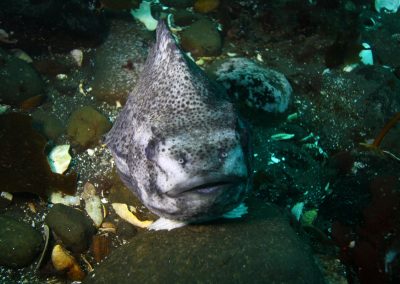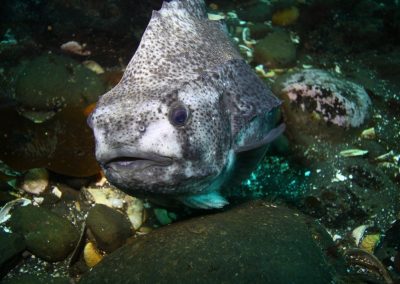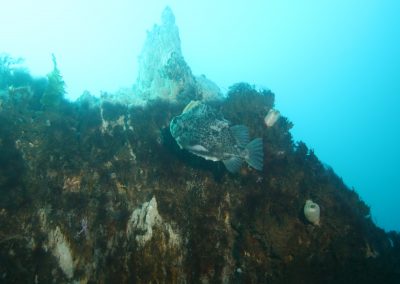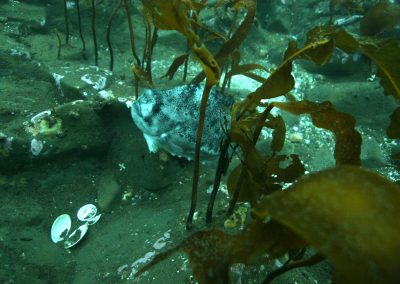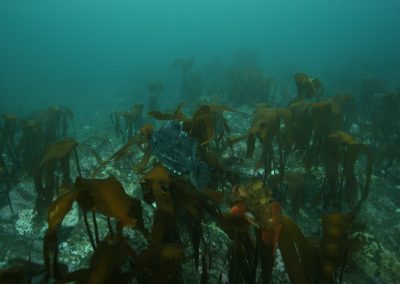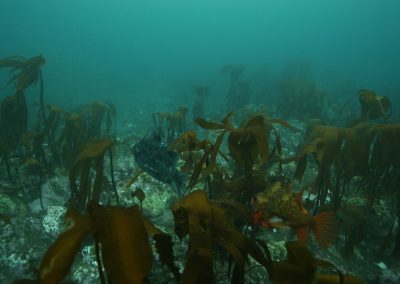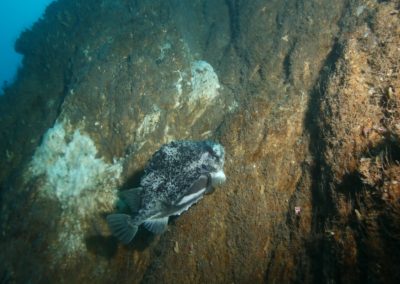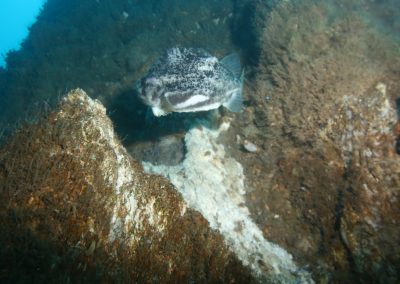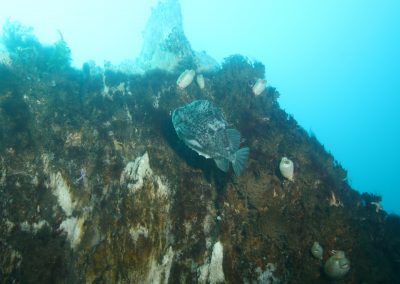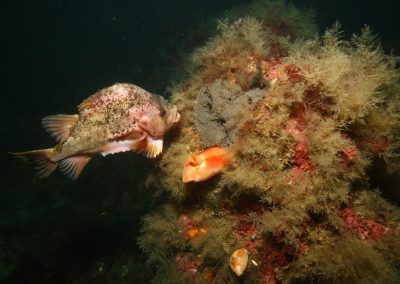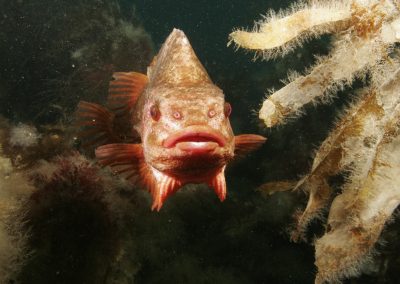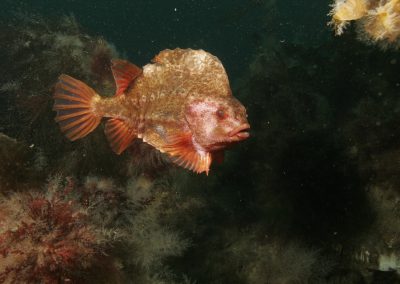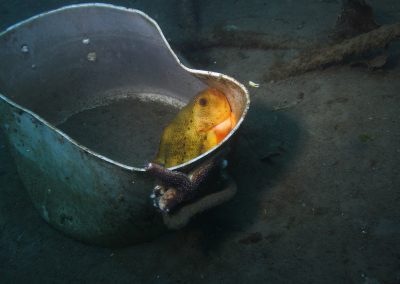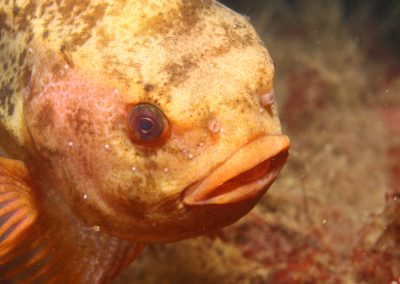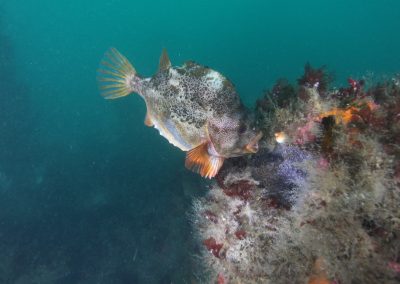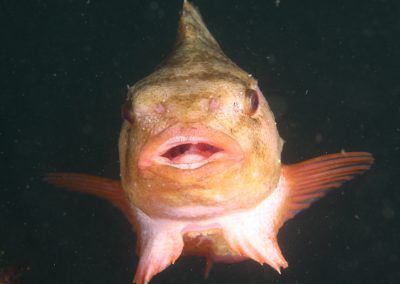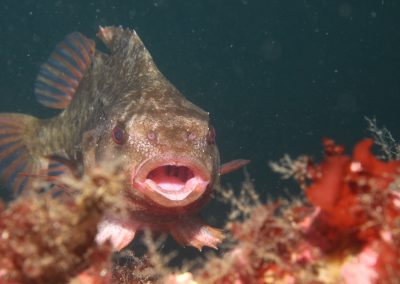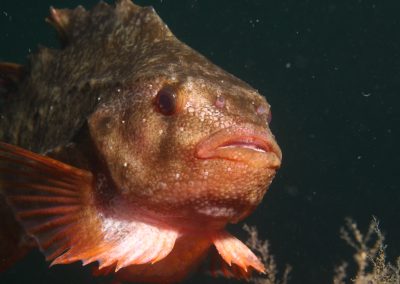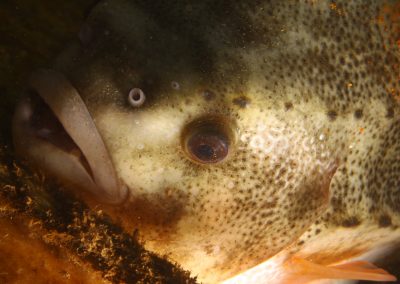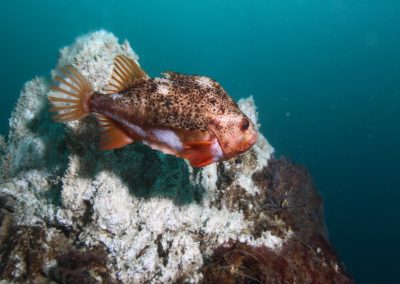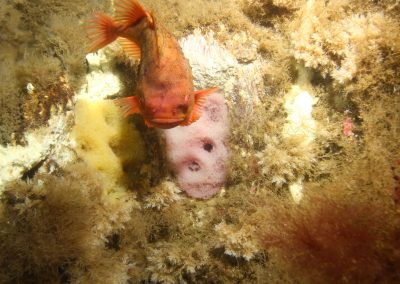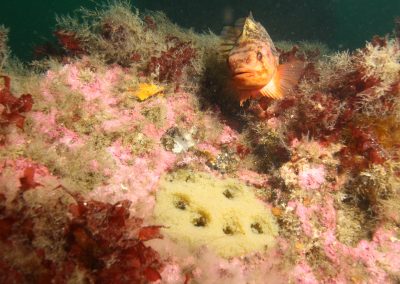Lumpfish
Cyclopterus lumpus
The lumpsucker is a thick, ungainly, almost ball-shaped fish. The females are much larger, or usually from 35 to 55 cm long, but can reach up to 60 cm; the males are usually 28 to 40 cm long. Lumpsuckers grow rapidly and can become mature at the age of two.
Distribution
It is found all around Iceland but is more common in the colder waters north and east of the country. The lumpsucker is found in European waters from Murmansk in the north to the Bay of Biscay in the south. It is also around the Faroe Islands, in southern Greenlandic waters and from Hudson Bay to Cape Cod in North America.
Ecology
The lumpsucker is actually a pelagic fish that spends most of its time in the open ocean. However, in the late winter the mature part of the stock migrates to very shallow water to spawn. The lumpsucker does not look like a good swimmer but they do actually migrate great distances. The lumpsucker is fished during these migrations. The spawning behaviour is quite distinct. The males arrive earlier than females, they make nests in the kelp beds and wait for the females. The females arrive, spawn and leave again while the male tends the nest until the eggs hatch. The males aggressively defend the nest during this time. It is estimated that only 10% of females survive after spawning, the survival rate of males is unknown. The lumpsucker seems to feed on various pelagic invertebrates, even jellyfish.
Fisheries
The lumpsucker has been harvested around Iceland for centuries. During the spawning time they are in very shallow waters and therefore easy to catch. In fact, lumpsucker fisheries have bordered on being considered a type of agriculture instead of fisheries. Lumpsucker fisheries do still obey different rules from other fisheries. There is no quota, but a special permit is required. The lumpsuckers are only fished with special large mesh gillnets using small decked or undecked boats.
The males are considered a delicatessen by many people in Iceland and the catches for local consumption mostly target these. However, the females are considered inedible except by hanging them up to dry for some time (then it is still an acquired taste). However, the roe that the females are full of when migrating to spawning grounds is very valuable. Most of the current catches are for the females and the only statistics available on lumpsucker catches are on these fisheries
HÞV

